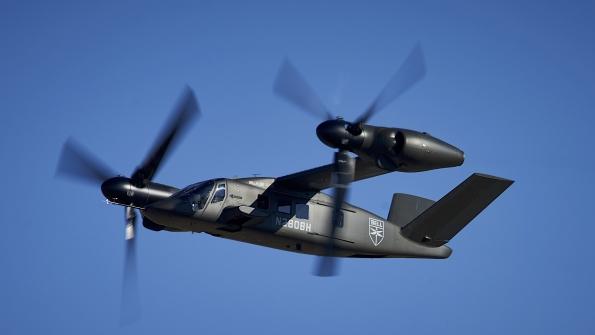
ARLINGTON, Texas—Bell is preparing to demonstrate the autonomous flight capability of its V-280 Valor advanced tiltrotor, under the U.S. Army’s Joint Multi Role precursor to the Future Long-Range Assault Aircraft (FLRAA) program.
The demo will showcase the capability designed into the V-280’s fly-by-wire flight control system to fly the aircraft autonomously from vertical takeoff through transition to wingborne cruise and back to a rotorborne vertical landing.
“We have released the autonomous build of the software and just loaded it into the aircraft,” Ryan Ehinger, Bell’s V-280 program manager, said Dec. 12. The aircraft has been flying with the software for the past week, performing regression testing. The next step will be envelope expansion.
“We have not flown autonomously yet. We will do that in the next couple of months,” he said, speaking during a media tour of Bell’s Flight Research Center here in Arlington, Texas.
The autonomous flight demo—which will be limited to taking off, flying a pattern around the airport and landing with a safety pilot on board—will be conducted under a year-long extension to the Joint Multi Role Technology Demonstration (JMR TD) program.
For Bell and the rival Sikorsky/Boeing SB-1 Defiant team, the Army’s extension of JMR TD bridges the gap to the start of a two-year concept definition and risk reduction (CDRR) phase for FLRAA, scheduled for award in March 2020.
The competitive CDRR phase is planned to lead to award of an engineering and manufacturing development contract for FLRAA, which is intended to replace the Army’s fleet of UH-60 Black Hawk utility helicopters beginning in 2030.
First flown in December 2017, the V-280 has accumulated more than 150 hr. of flight time, reaching 300 kt. and exceeding the target mission radius of 229 nm and long-range cruise speed of 220 kt. while demonstrating Level 1 handling qualities at low speed.
